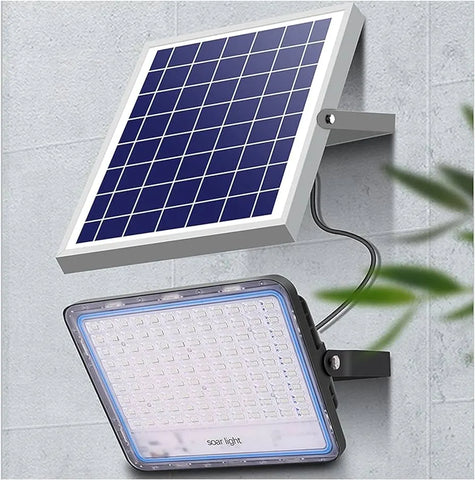+44 7444 357760
+44 7444 357760

In today's environmentally conscious world, solar floodlights have become a beacon of sustainable and efficient lighting. Harnessing the power of the sun, these lights offer a green solution to illuminate outdoor spaces without compromising on brightness or coverage. Ideal for residential, commercial, and industrial settings, solar floodlights are versatile, cost-effective, and easy to install. In this post, we'll guide you through the benefits of solar floodlights and provide tips on how to use them effectively for various applications.

Solar floodlights harness solar energy to provide lighting, making them an eco-friendly alternative to traditional electric lighting. They come with solar panels that charge during the day, storing energy in batteries to power the lights at night. This process significantly reduces electricity usage, offering a sustainable way to light up outdoor areas.
Identify the primary use for your solar floodlights. Whether it's for security, enhancing the aesthetics of your garden, or lighting up a parking lot, understanding the purpose will guide your placement and selection of lights.
For optimal performance, place the solar panels in an area where they can receive maximum sunlight throughout the day. Avoid locations where the panels might be shaded, as this can significantly reduce their efficiency.
The size and type of area you wish to illuminate will determine the number and intensity of floodlights needed. Larger areas may require multiple lights or floodlights with higher lumen output for adequate coverage.
Solar floodlights are relatively easy to install compared to traditional wired lights. Most models come with mounting hardware, allowing you to secure them to walls, poles, or the ground. Ensure they are positioned to adequately cover the intended area with light.
Once installed, adjust the direction of the floodlights to focus on specific areas you want to illuminate. Test the lights at night to ensure they meet your lighting needs and adjust as necessary.

Solar floodlights offer a sustainable, efficient, and versatile lighting solution for various outdoor applications. By following the tips outlined in this guide, you can maximize the benefits of solar floodlights, improving security, visibility, and ambiance in your outdoor spaces while contributing to a greener planet.
For those interested in adopting solar floodlighting, visit solar lights collection to explore our wide selection of solar-powered lighting solutions. Illuminate your space smartly and sustainably with solar led floodlights.